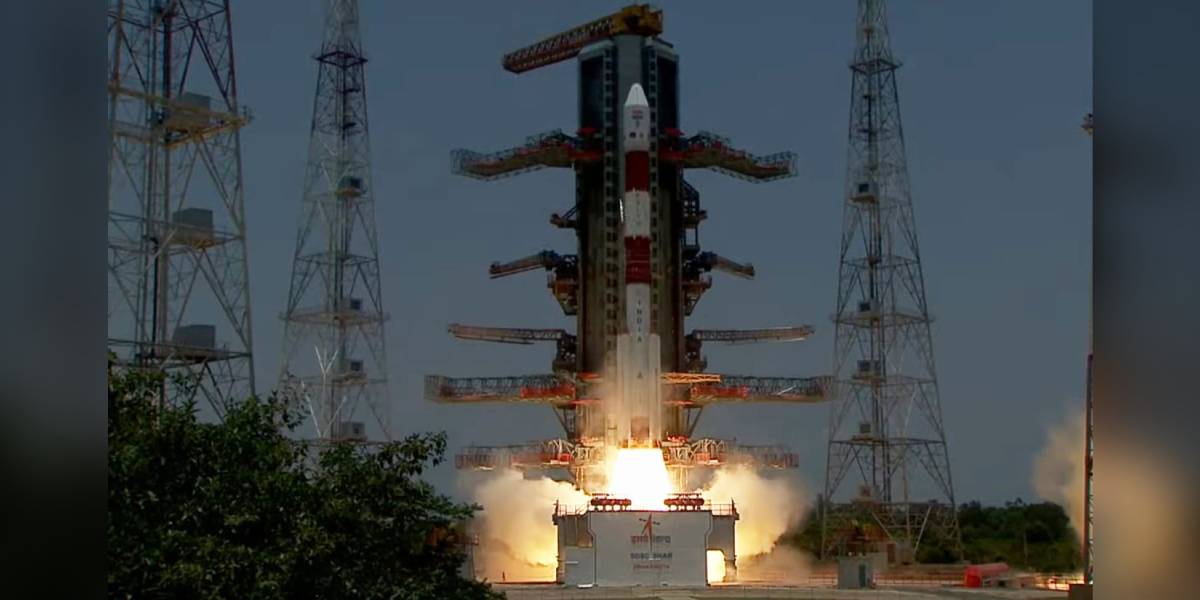Aditya L1, after travelling 1.5 million km from Earth in 125 days, is expected to be placed in a Halo orbit around Lagrangian point L1.

Aditya L1 launch from Sriharikota. (Supplied)
Aditya L1 spacecraft, India’s first space-based mission to study the Sun, is nearing its final phase, and manoeuvres to enter the “L1 point” are expected to be completed by 7 January, 2024, according to Indian Space Research Organisatiion (ISRO) Chairman S Somanath.
“Aditya is on the way. I think it has reached almost its final phase,” the ISRO chief told PTI on the sidelines of an event organised at Vikram Sarabhai Space Centre (VSCC), in Thiruvananthapuram, to commemorate the 60th year of the launch if the first sounding rocket.
He said that the preparations for the spacecraft’s entry into the L1 point are currently underway.
“Possibly by 7 January, the final manoeuvres will be done for entering into the L1 point,” Somanath added.
Aditya L1 was successfully launched on 2 September from the Satish Dhawan Space Centre (SDSC) in Sriharikota, Andhra Pradesh.
The spacecraft, after travelling about 1.5 million km from Earth over 125 days, is expected to be placed in a Halo orbit around the Lagrangian point L1, considered closest to the Sun.
Among other tasks, it will capture and transmit pictures of the Sun for scientific experiments.
Imagine a small object, like a satellite, that has to be put at a specific spot in space where it can stay balanced under the gravitational influence of two larger objects, like the Earth and the Sun. This spot is called a “Lagrangian point”.
There are five Lagrangian points — L1 to L5 — in the Earth-Sun system. They are named after mathematician Joseph-Louis Lagrange, who found these points.
L1 is located between the Earth and the Sun, a bit closer to the Sun and 1.5 million km from the Earth. It is a point where the gravitational forces of the Earth and the Sun balance the third object in such a way that the third object will not move towards either the Earth or the Sun. Instead, it hovers due to the gravitational forces of the bigger bodies cancelling each other.
Aditya-L1 at L1 can continuously observe the Sun without being blocked by the Earth.
The Aditya-L1 mission aims to study the Sun and its behaviour in a closer and more detailed way. By positioning the spacecraft near the Sun, scientists can make observations of the Sun’s outer layers, its activity, and the environment around it.
The Aditya L1 spacecraft is designed to provide remote observations of the solar corona and in-situ observations of the solar wind at L1 (Sun-Earth Lagrange point), which is about 1.5 million km from Earth.
It is the first dedicated Indian space mission for observations of the Sun. Aimed at studying the Sun from an orbit around the L1, the mission carries seven payloads to observe the photosphere, chromosphere and the outermost layers of the Sun, the corona, in different wavebands.
Aditya L1 is a fully indigenous effort with the participation of national institutions.
(With PTI inputs.)

Jul 10, 2024

May 27, 2024

May 15, 2024

May 02, 2024

Apr 29, 2024

Apr 29, 2024